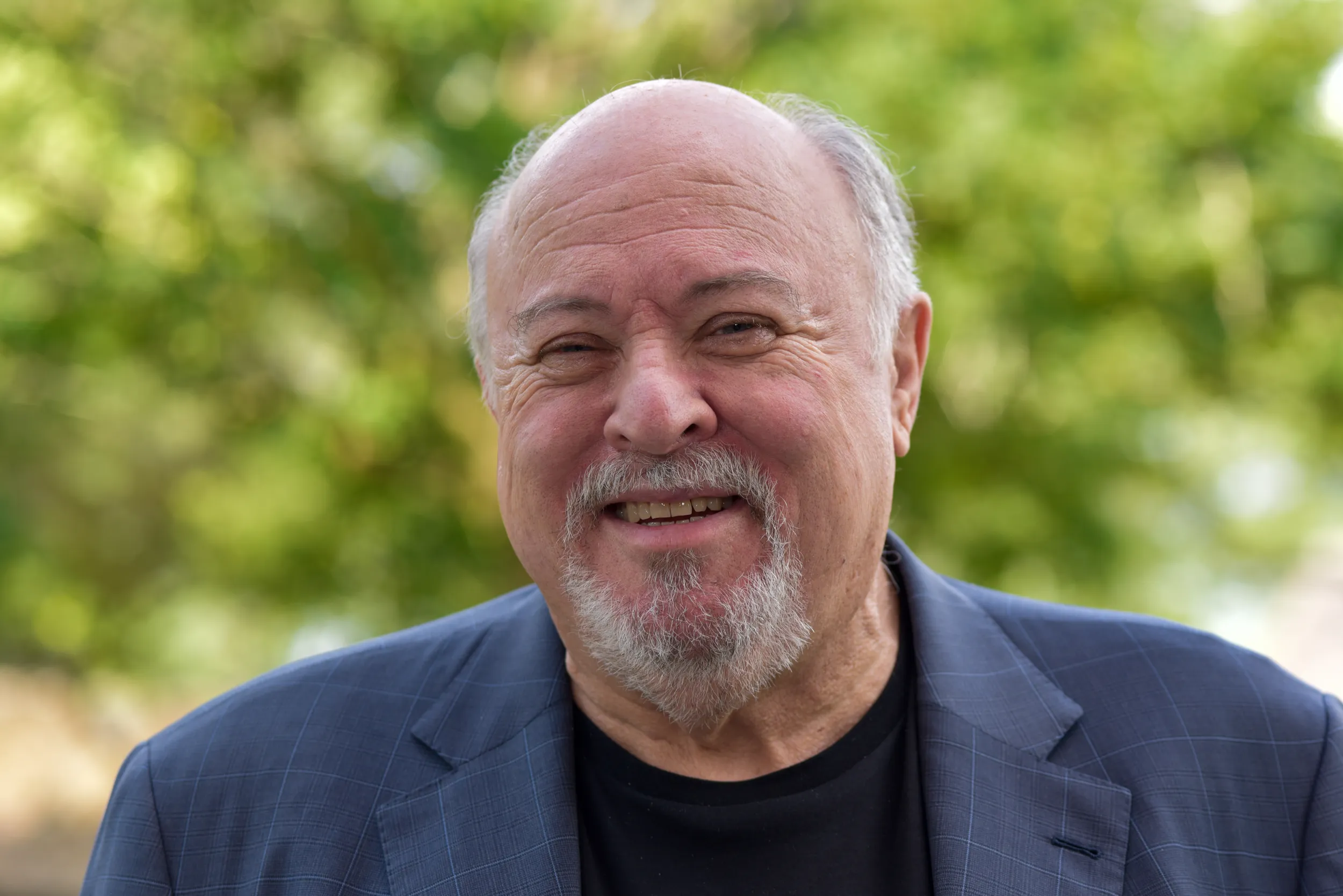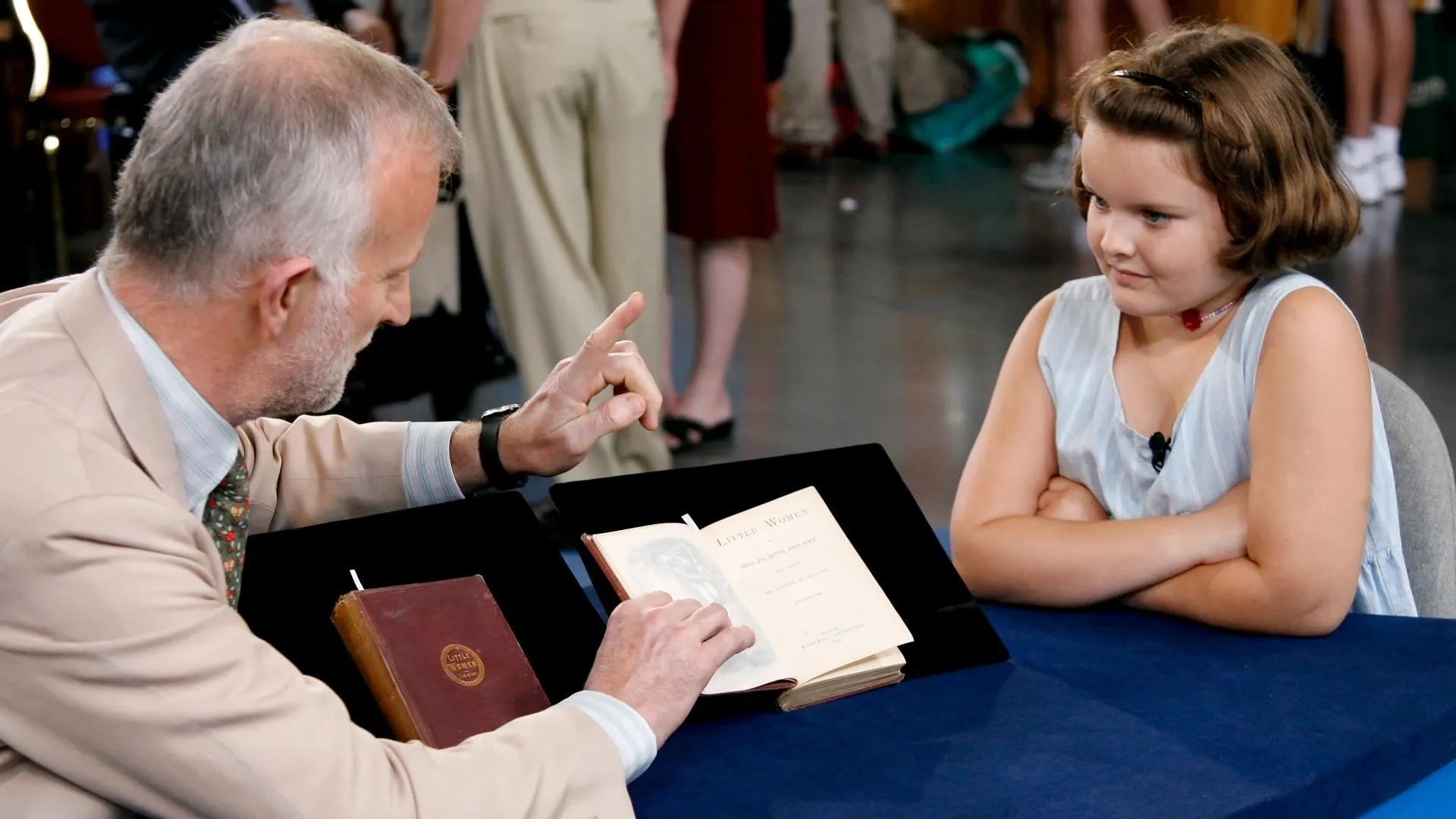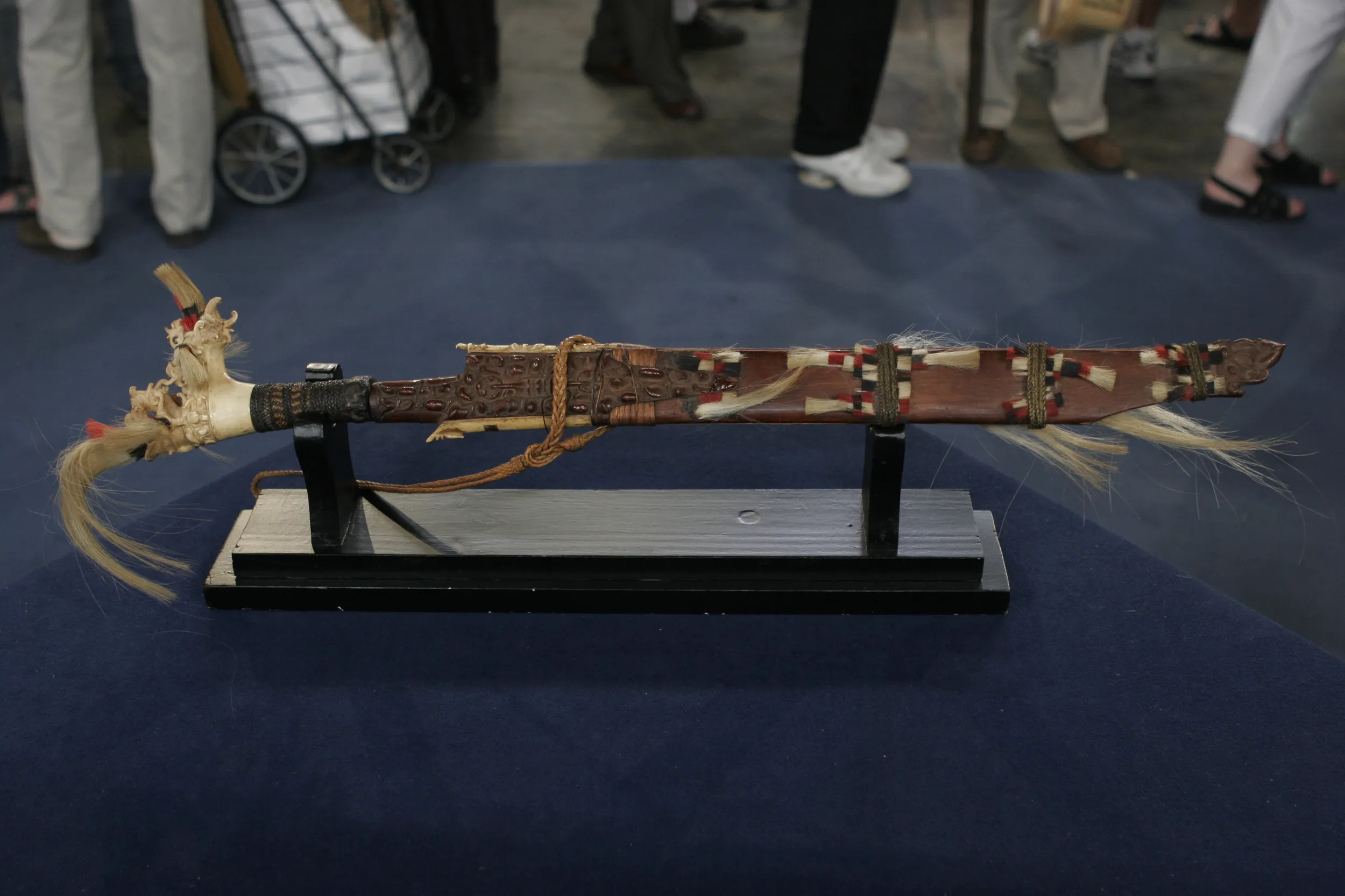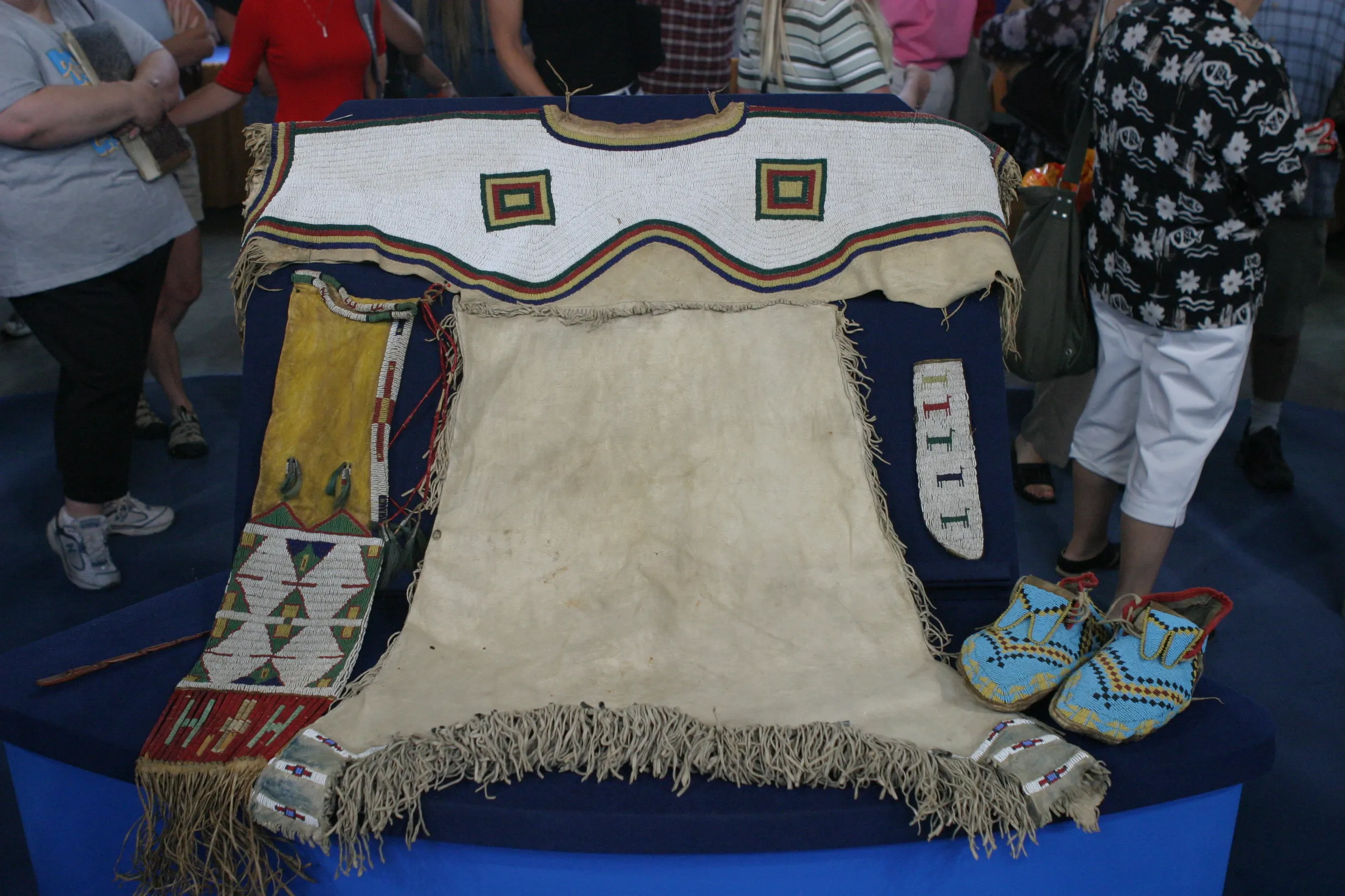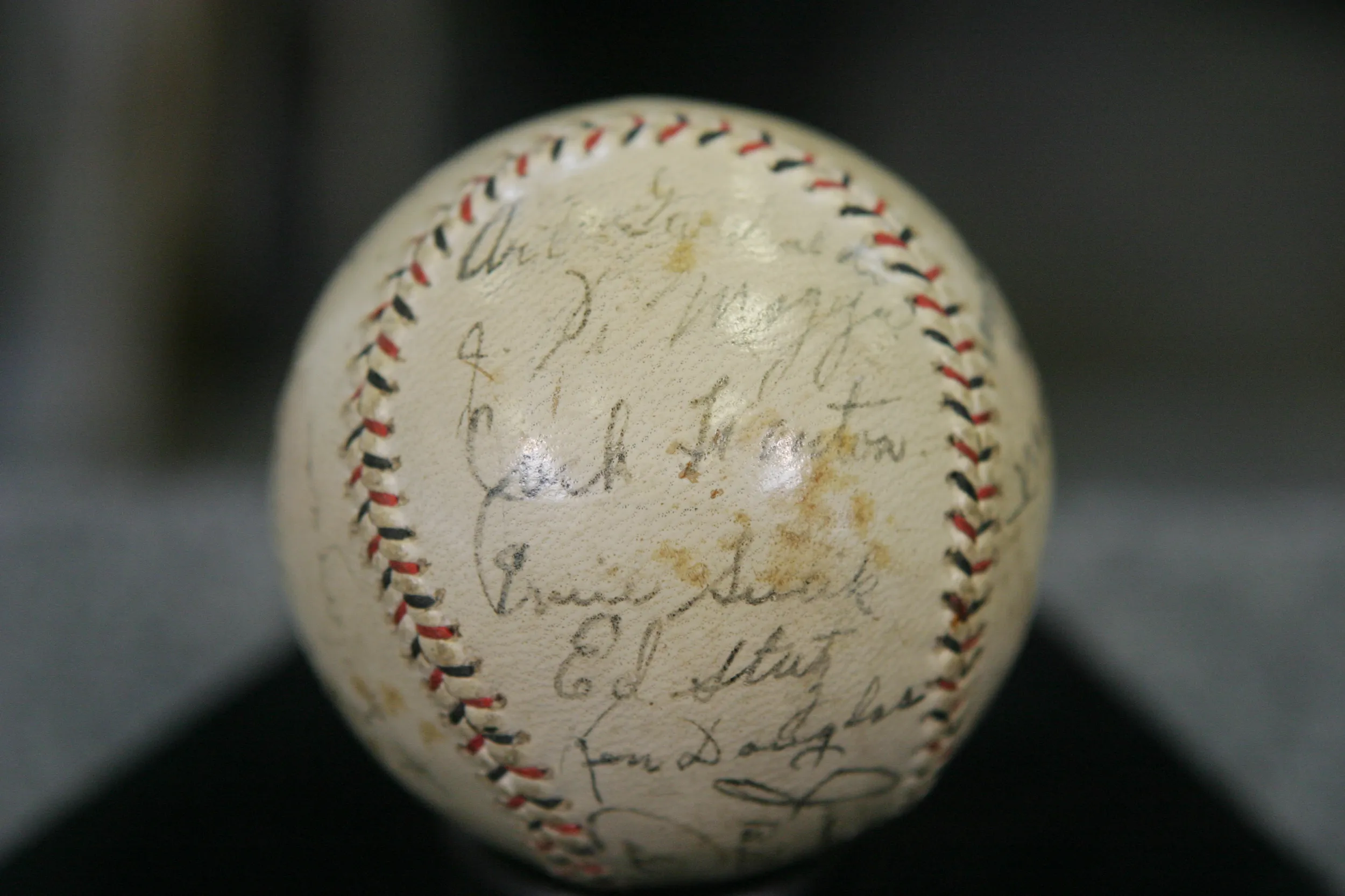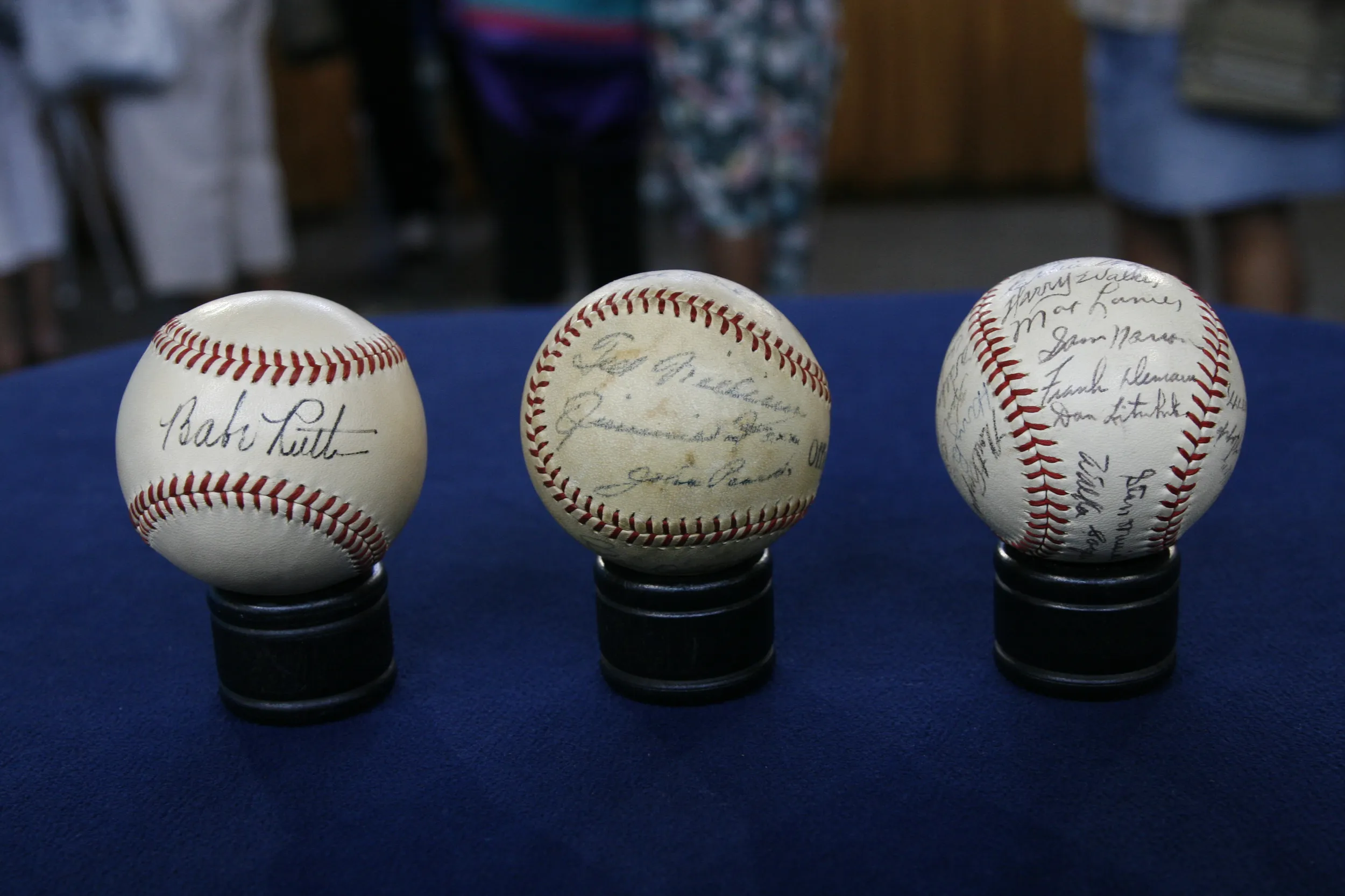GUEST: Brought a spur and chaps and a picture of my uncle. He was born in 1910. About three years old, it looks like, when he was wearing these. That ... you see on the spurs is a silver centavos..., and I believe the rowels are coin-- cut-out coin.
APPRAISER: This is the rowel.
GUEST: And his name is Jack Burke, which is in-laid in silver across there.
APPRAISER: Where do you reckon those spurs came from?
GUEST: Mexico, I think, because of the "centavos."
APPRAISER: He's not wearing the chaps in the photograph.
GUEST: Right.
APPRAISER: I wish he was, but he's not. These are shotgun chaps, they're called. And they're real typical of the trail drive era. Then the styles changed to those big batwing chaps that you probably grew up with and that I had seen.
GUEST: Right.
APPRAISER: But these narrow shotgun style's a real old style. I've never seen a pair this small. I think they were made for him. They're too unusual. So they kind of had him dressed like an old-style cowboy.
GUEST: (laughing)
APPRAISER: Now the spurs. They're not from Mexico. The fact that they have Mexican coins on the buttons...
GUEST: Uh-huh.
APPRAISER: The way the engraving is, with his name on the side, the five-pointed-star rowel, it's all the hallmarks of an Italian spur maker in Victoria, Texas, named Joe Bianchi. He made spurs for everybody who was anybody and everybody who was nobody in south Texas. And he made them for cowboys, ranchers, some of the biggest ranchers you've ever heard of in Texas. Your uncle is wearing the spurs in that photograph, which is a neat documentation of them in use. They're the smallest Bianchi spurs I have ever seen. The chaps, if they were marked, would be worth more. But as it is, they're probably worth $1,200 to $1,500, which is pretty good for little kids' clothes.
GUEST: Uh-huh.
APPRAISER: The spurs are easily worth the same. So we're talking $2,400, $3,000. It's great stuff, and child's gear is particularly desirable right now.
